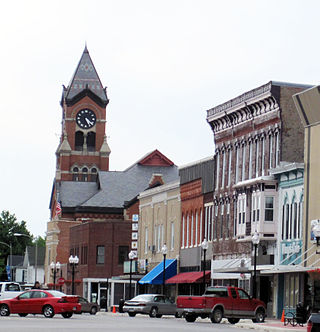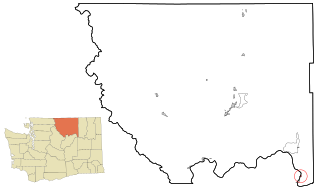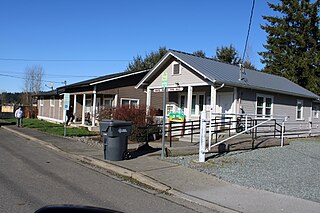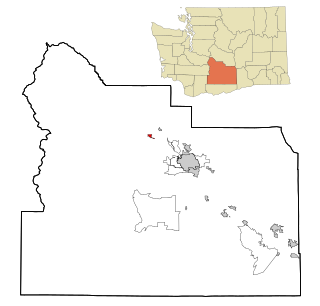
Ainsworth is a city in Washington County, Iowa, United States. It is a part of the Iowa City, Iowa Metropolitan Statistical Area. The population was 511 at the 2020 census. It is part of the Highland Community School District.

Washington is a city in and the county seat of Washington County, Iowa, United States. It is part of the Iowa City, Iowa Metropolitan Statistical Area. The population was 7,352 at the time of the 2020 census.

Dellwood is a city in Washington County, Minnesota, United States and a suburb of St. Paul. The population was 1,063 at the 2010 census.

Washington is a city on the south banks of the Missouri River, 50 miles west of St. Louis, Missouri. With an estimated population of 15,075, it is the largest city in Franklin County, Missouri. It is notable for being the "corncob pipe capital of the world," with Missouri Meerschaum located on the city's riverfront.

Bloomsdale is a city in Ste. Genevieve County, Missouri, United States. The population was 639 at the 2020 census.

George is a city in Grant County, Washington, United States. The population was 809 at the 2020 census. The "humorous homage" to President George Washington has landed George, Washington on lists of unusual place names.

Normandy Park is a city in King County, Washington, United States. The population was 6,771 at the 2020 census.

Elmer City is a town in Okanogan County, Washington, United States. The population was 239 at the 2020 census.

South Bend is a city in and the county seat of Pacific County, Washington, United States. The population was 1,746 as of the 2020 census. The town is widely-known for its oyster production and scenery.

South Prairie is a town in Pierce County, Washington, United States. The population was 373 at the 2020 census.

Rockford is a town in Spokane County, Washington, United States. The population was 522 at the 2020 census.

Kettle Falls is a city in Stevens County, Washington, United States, named for the nearby Kettle Falls on the Kettle River. The city itself is located on the Colville River immediately upstream from its confluence with the Columbia River. The population of the city was 1,636 at the 2020 census.

Farmington is a town in Whitman County, Washington, United States. The population was 131 at the 2020 census.

Garfield is a city in Whitman County, Washington, United States. The population was 562 at the 2020 census.

Malden is a town in Whitman County, eastern Washington, United States. The population was 216 at the 2020 census. 80 percent of the buildings were destroyed by a wildfire on September 7, 2020.

Oakesdale is a town in Whitman County, Washington, United States. The population was 395 at the 2020 census.

Harrah is a town in Yakima County, Washington, United States. The population was 585 at the 2020 census. It is on the Yakama Indian Reservation.

Naches is a town in Yakima County, Washington, United States. The population was 1,084 at the 2020 census. The town is located along the Naches River west of Yakima near the eastern foothills of the Cascade Range.

Tieton is a city in Yakima County, Washington, United States. The population was 1,389 at the 2020 census.

Glen Dale is a city in Marshall County, West Virginia, United States, along the Ohio River. It is part of the Wheeling, West Virginia Metropolitan Statistical Area. The population was 1,514 at the 2020 census. Glen Dale was incorporated in 1924. It is in the northwest part of the county, which is above the Mason–Dixon line and forms the base of the Northern Panhandle of West Virginia.























